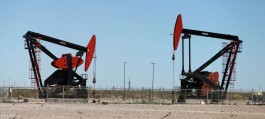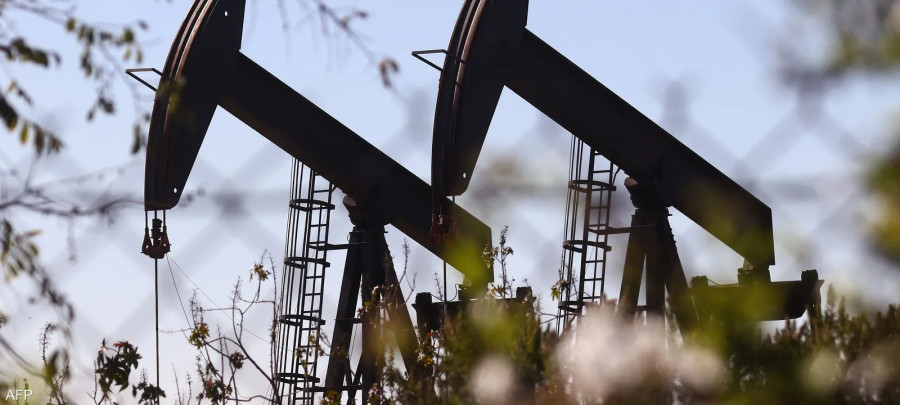With oil prices exceeding the threshold of $90 per barrel, in recent weeks, estimates indicated the possibility of achieving triple digits, reaching $100 before the end of the current year 2023. However, contrary to those expectations, oil markets suffered their largest loss since March last week. , depending on many influencing factors.
Over the past week, Brent recorded a decline of about 11 percent, and West Texas Intermediate crude by more than 8 percent, amid fears that high interest rates will slow global growth and harm fuel demand, even with declining supplies from Saudi Arabia and Russia, which announced continued production cuts. Until the end of the year.
Analysts' estimates vary between expectations of touching triple digits after exceeding the speculation that the markets witnessed recently, which led to the market's decline, and expectations of stability at the current level or perhaps further declines in light of the pressures affecting the global economic scene, which in turn affect the growth of demand, and in a parallel line with the indicators that... Reflects the continued tightening of monetary policy in light of current inflationary pressures.
Between the bets of speculators on the rise and fall, the question that imposes itself on the markets now is: After the significant declines in oil prices... has reaching the $100 level this year become unlikely?
Worst performance since last March
The economic researcher specializing in oil affairs, Amer Al-Shobaki, says in exclusive statements to the Sky News Arabia website that last week was the worst for oil markets since last March, after prices fell by 11 percent, indicating that this is a major loss, which had its reasons. The most important of these reasons is speculation in the markets.
He added: Speculation comes due to fears related to the global economy, with the continued high interest rates by the US Federal Reserve and other central banks... in addition to the rise in the price of the dollar, as well as reports that indicated that Russia may resume exporting diesel and gasoline... All of these were reasons that led To speculation that led to a decline in prices.
Russia announced that it had lifted its ban on diesel exports for supplies delivered to ports via pipelines. Companies must still sell at least 50 percent of their diesel production to the local market.
But he believes that the picture may be different in the coming weeks. He explained that among the reasons and frustrating feelings in the oil markets was the decline in demand for gasoline, and this was due to the floods that New York witnessed, which paralyzed transportation and affected demand, which led to an increase in stocks of approximately six million barrels.
He continues: Now this is not a long-term matter, because transportation traffic will inevitably return, and there is an additional demand for fuel next winter, whether gasoline or diesel.
Al-Shoubaki stresses that the OPEC Plus cuts are the decisive factor in determining oil prices, as the market is still tight, and OPEC Plus, as a group of its countries, is still withholding from the markets 5 percent of production, with a total of approximately 4.9 million barrels, divided by 1.3 million barrels as a voluntary reduction from Saudi Arabia and Russia, and 2 million barrels agreed upon from OPEC Plus countries, in addition to 1.6 million voluntary cuts from 8 or 9 OPEC Plus countries.
Also, market sentiment in China is heading to improve with the improvement of some economic data in Beijing, given that China is a major driver of demand for oil, and constitutes half of the growth in demand. Therefore, these matters combined with the lack of supplies in the markets on the part of OPEC, would lead to... Prices will balance again in the coming weeks, and therefore the opportunity for prices to reach the $100 per barrel level in the coming weeks has not passed, according to Al-Shobaki.
Reports of strong Chinese travel activity have provided a price floor for the time being. China's mid-autumn and National Day holiday travel trips rose 71.3 percent year on year and 4.1 percent compared to 2019 to 826 million trips, according to Xinhua News Agency.
Al-Shoubaki bases his aforementioned estimates by saying: This is if there are no additional supplies from the United States or other countries... Oil production in America has reached the second highest historical level at 13 million barrels per day... In addition to the Iraqi oil pipeline between Kirkuk and the Turkish port of Ceyhan. Pumping may resume next week, according to Turkish reports. These matters require time, from the end of October and the beginning of November, for the extent of the impact of supply in the markets on prices to become clear.
The economic researcher specializing in oil affairs concludes his speech by pointing out that the level of $100 per barrel is still close with the growth of global demand for oil.






































